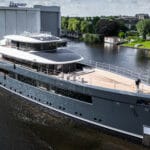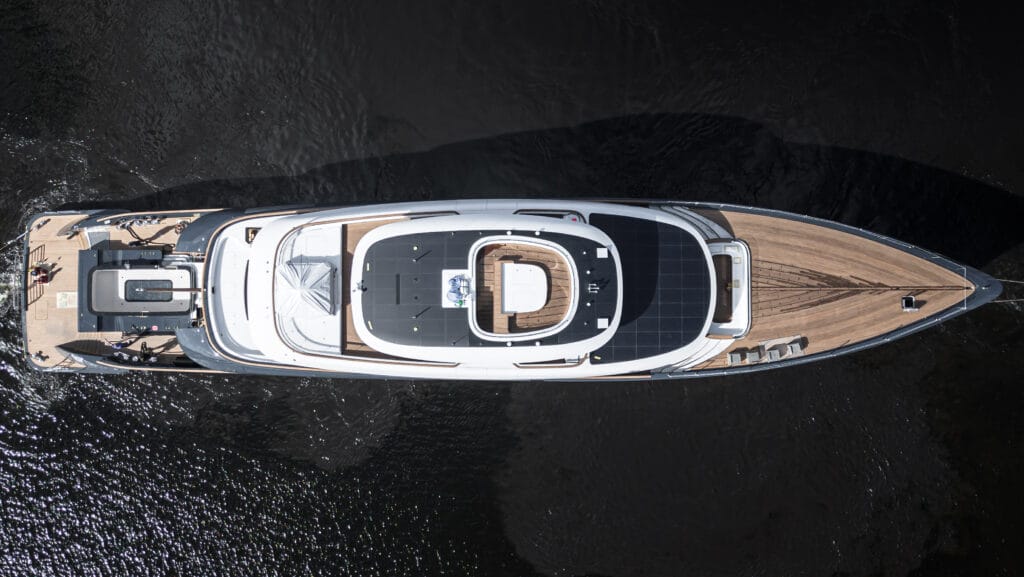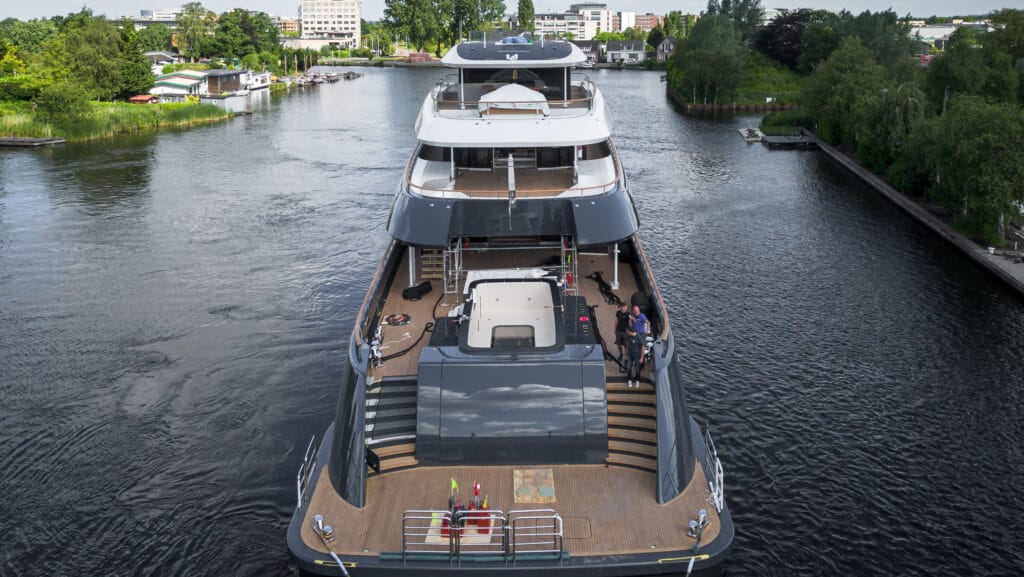
Feadship launches ‘solar-powered’ superyacht

Feadship has launched the 59.5-metre Project 713, the Dutch shipyard’s first vessel to carry solar cells for auxiliary power generation.
Feadship says that the launch of Project 713 represents a step towards its goal of being climate-neutral by 2030.
The superyacht follows recent Feadship launches, including the 84.2m hybrid superyacht Obsidian and Project 821, a landmark hydrogen yacht originally linked to Bill Gates, to embrace new-gen solutions that can reduce a vessel’s environmental impact.
Like all Feadship yachts, Project 713 has diesel-electric propulsion and can run on non-fossil HVO. The hull form is optimised for cruising speed instead of top speed, and the solar panels, thanks to efficient silicon cells, are designed for maximum performance.
These solar panels are custom-made in the Netherlands and produce up to 24 MWh annually, significantly contributing to the yacht’s energy efficiency.

Project 713, launched at Feadship’s Van Lent facilities, is fitted with a high-efficiency diesel-electric power system. Four generators and a 400-kWh battery supply energy for propulsion and the hotel load.
The yacht is also the first new-build Feadship to feature FSC-certified plantation teak for all the decking.
In addition, Project 713 has undergone a Yacht Environmental Transparency Index (YETI) assessment report, which concludes that Project 713 belongs to the best in the fleet at 35 per cent below average impact.
Feadship says the various efficiency-enhancing features “more than compensate” for the losses incurred by the onboard electrical conversions, and confirms the owner has been instrumental in the design and environmental impact reduction.

Project 713 has an exterior profile designed by Studio De Voogt, a distinctive blue-grey hull, and a white superstructure. Sinot Yacht Architecture & Design created the contemporary interiors.
The post Feadship launches ‘solar-powered’ superyacht appeared first on Marine Industry News.
